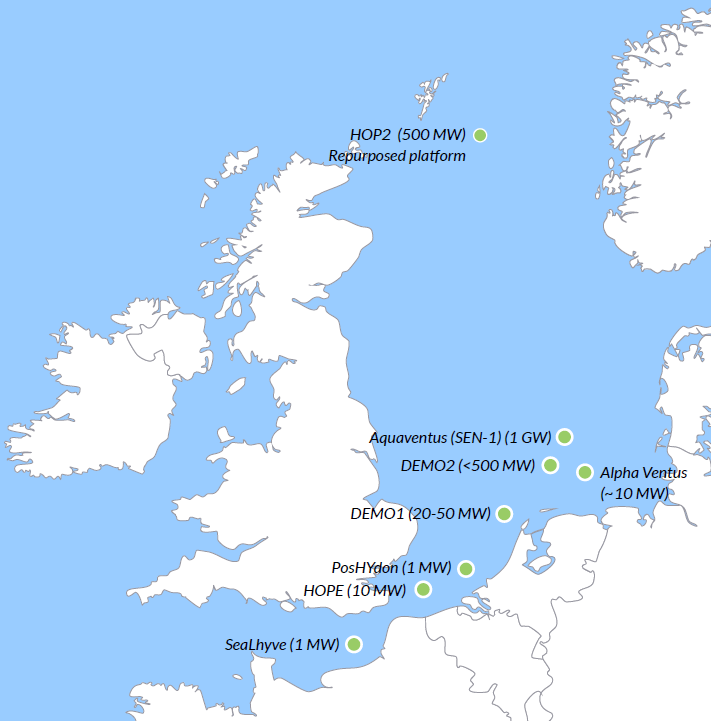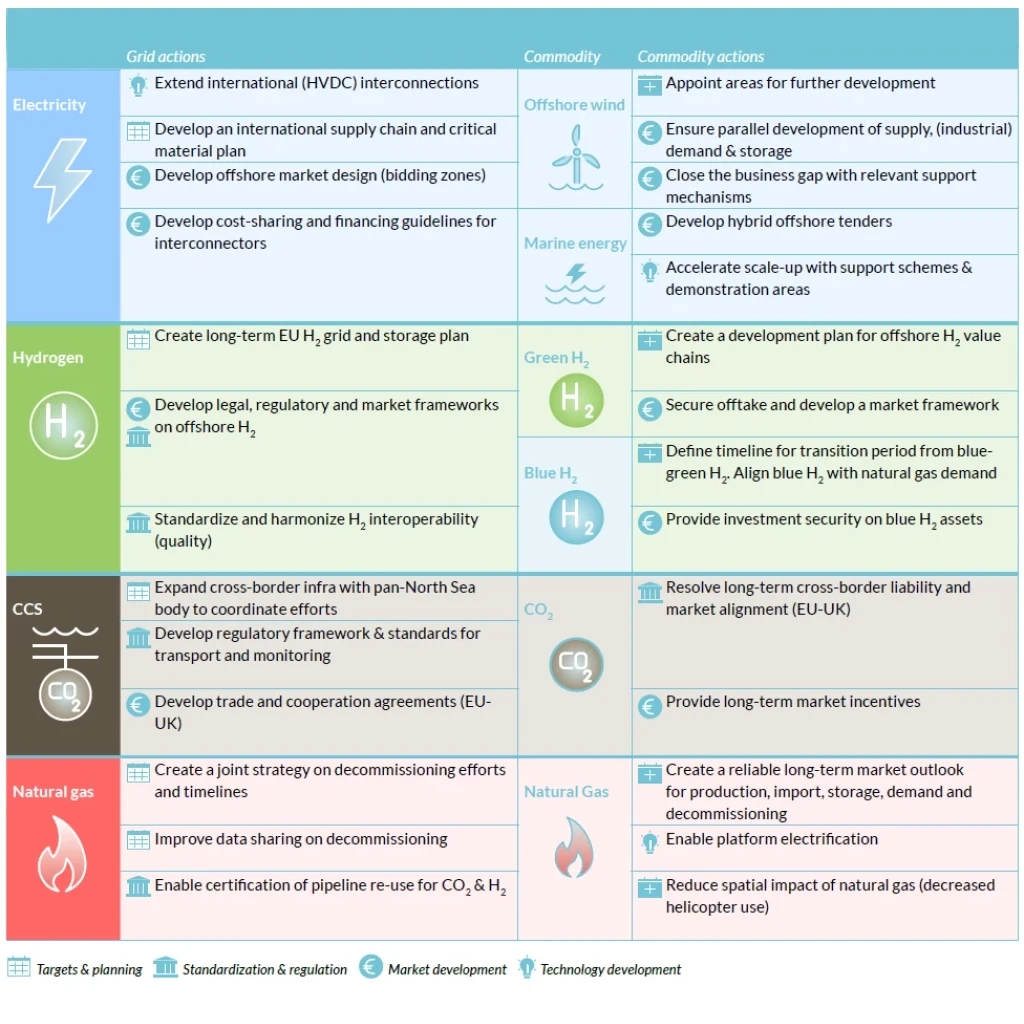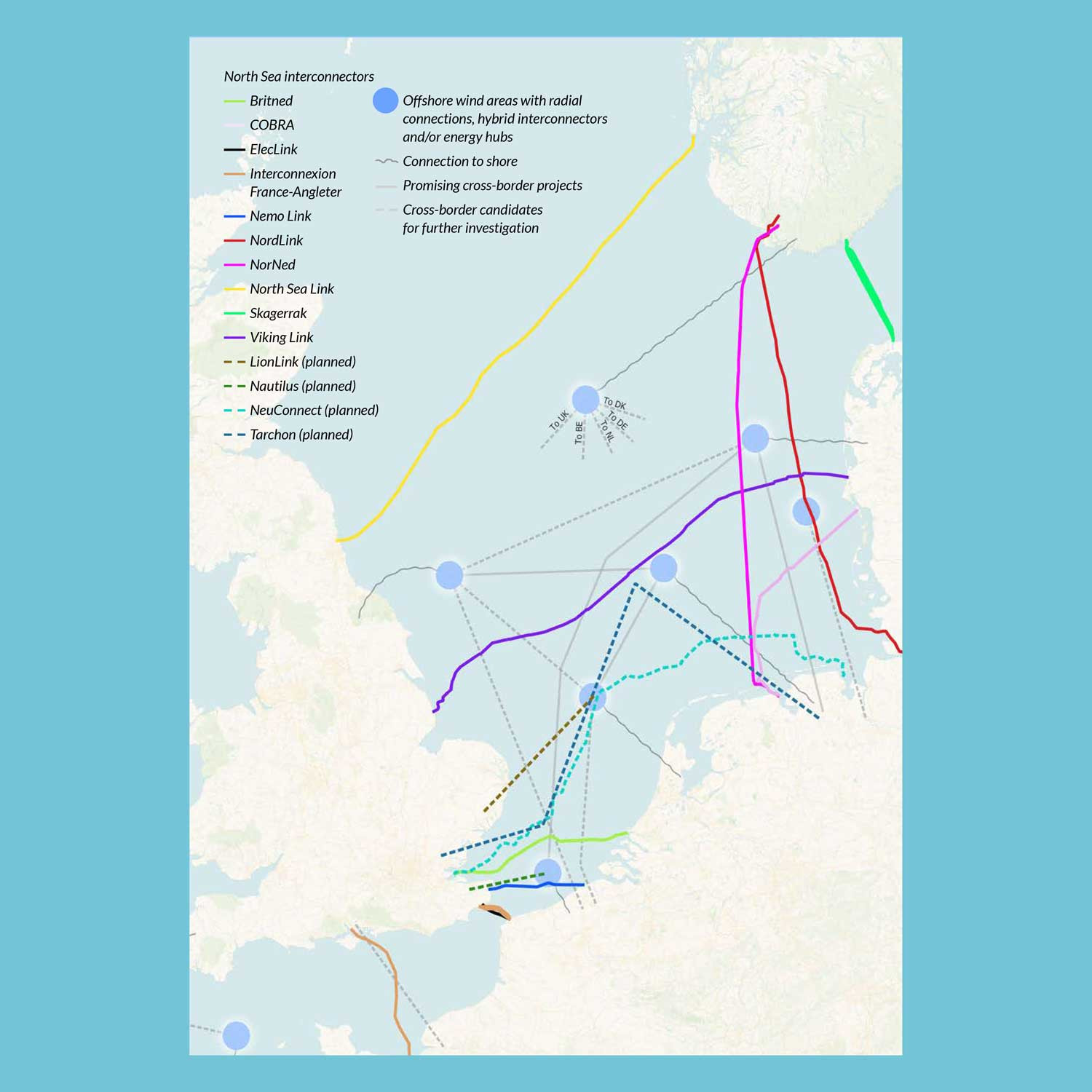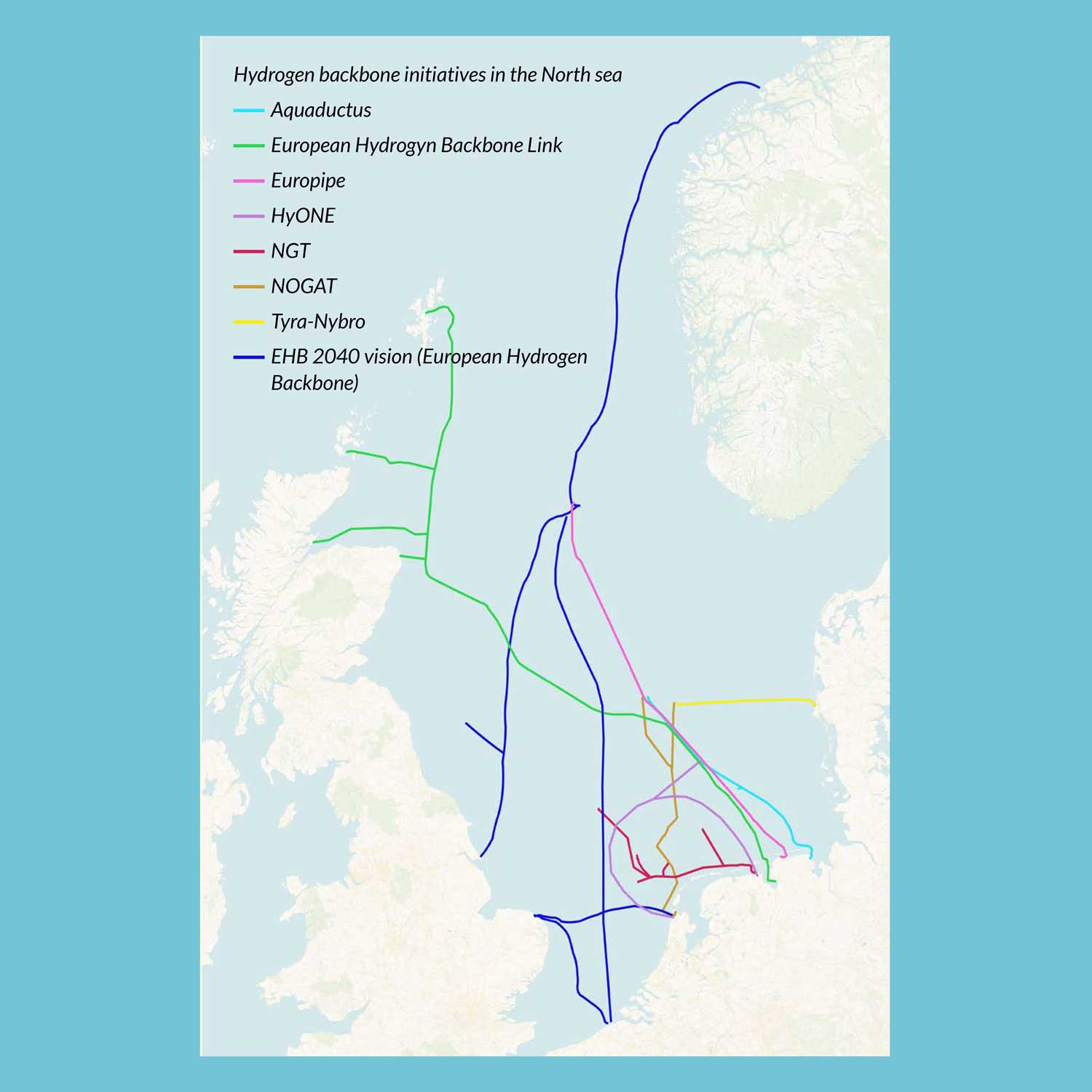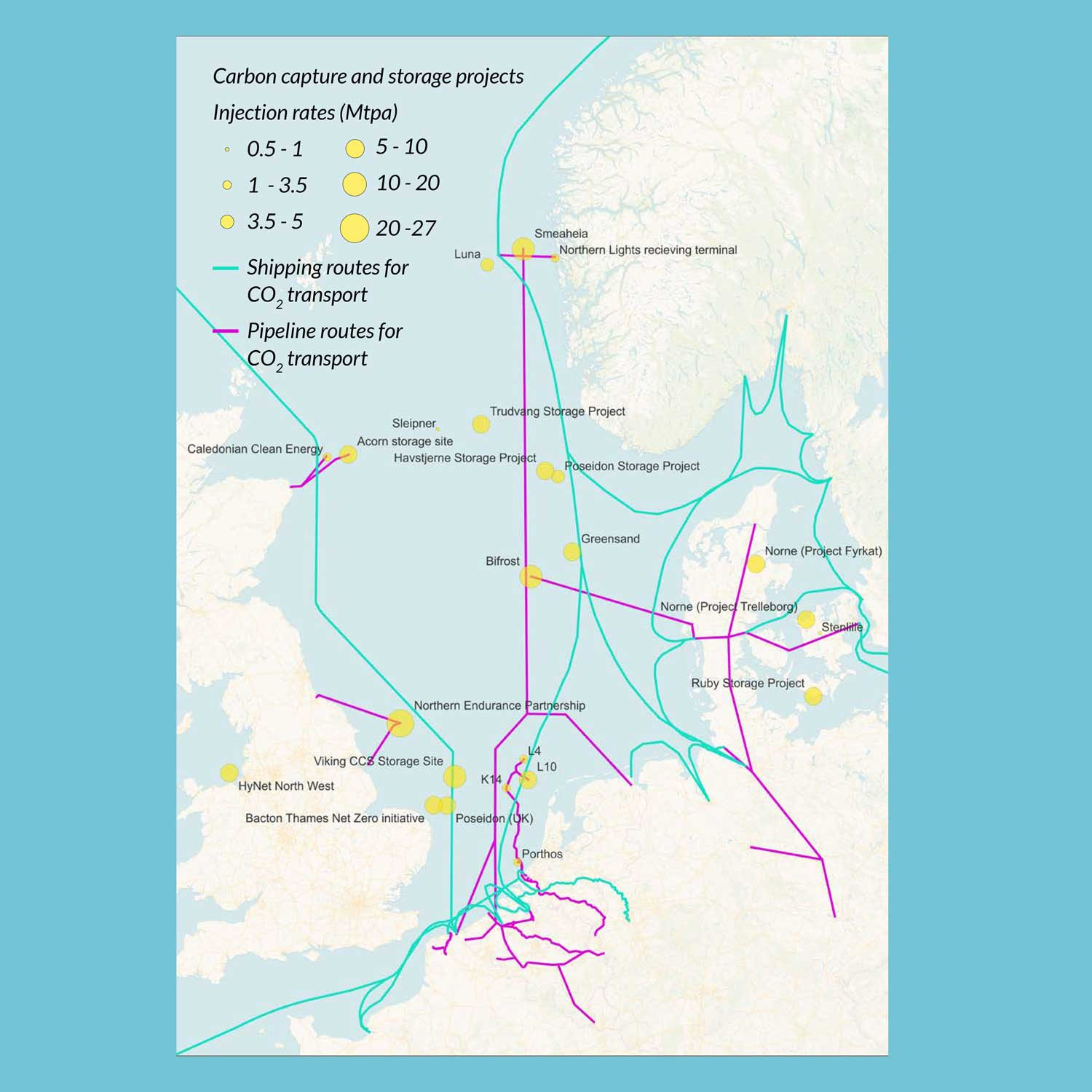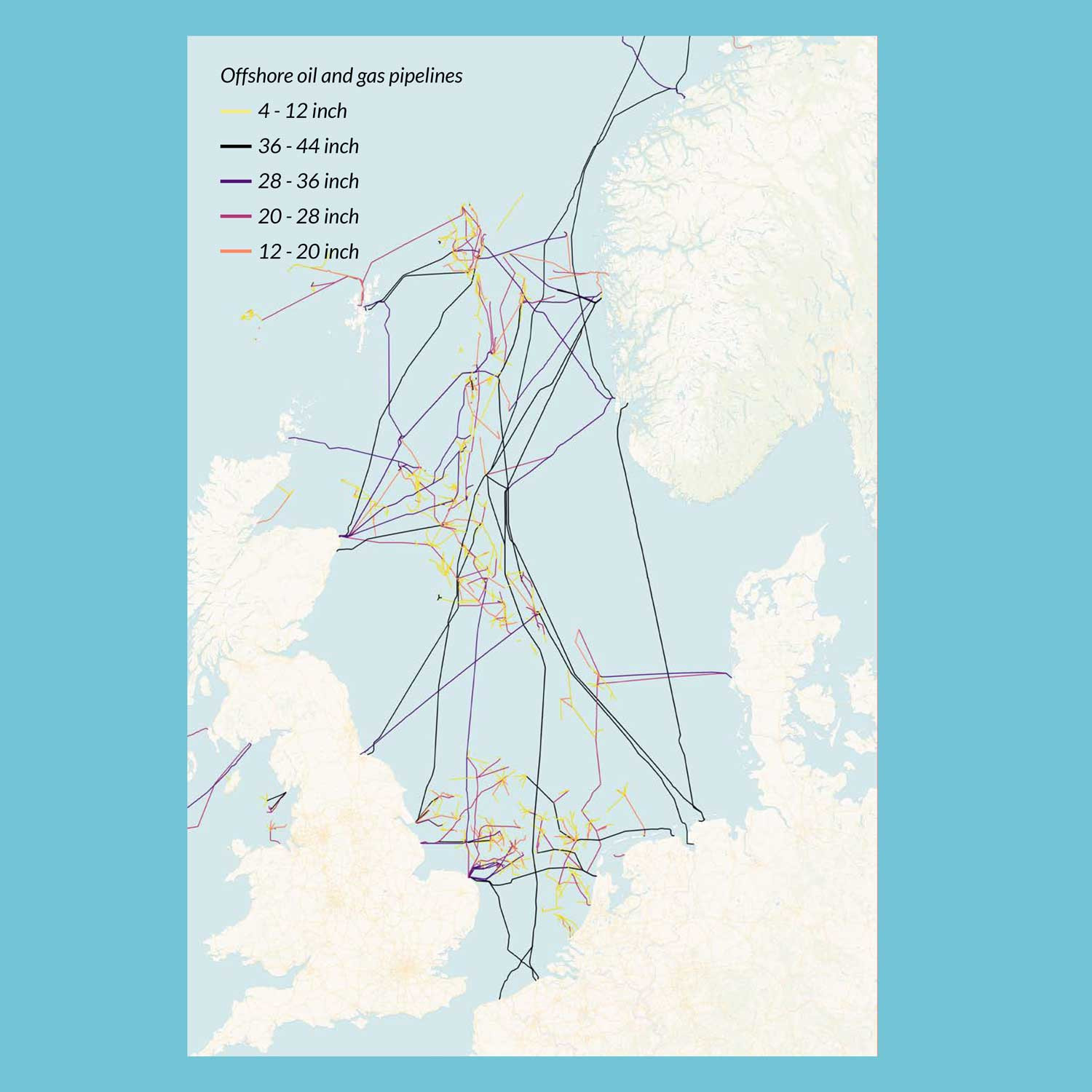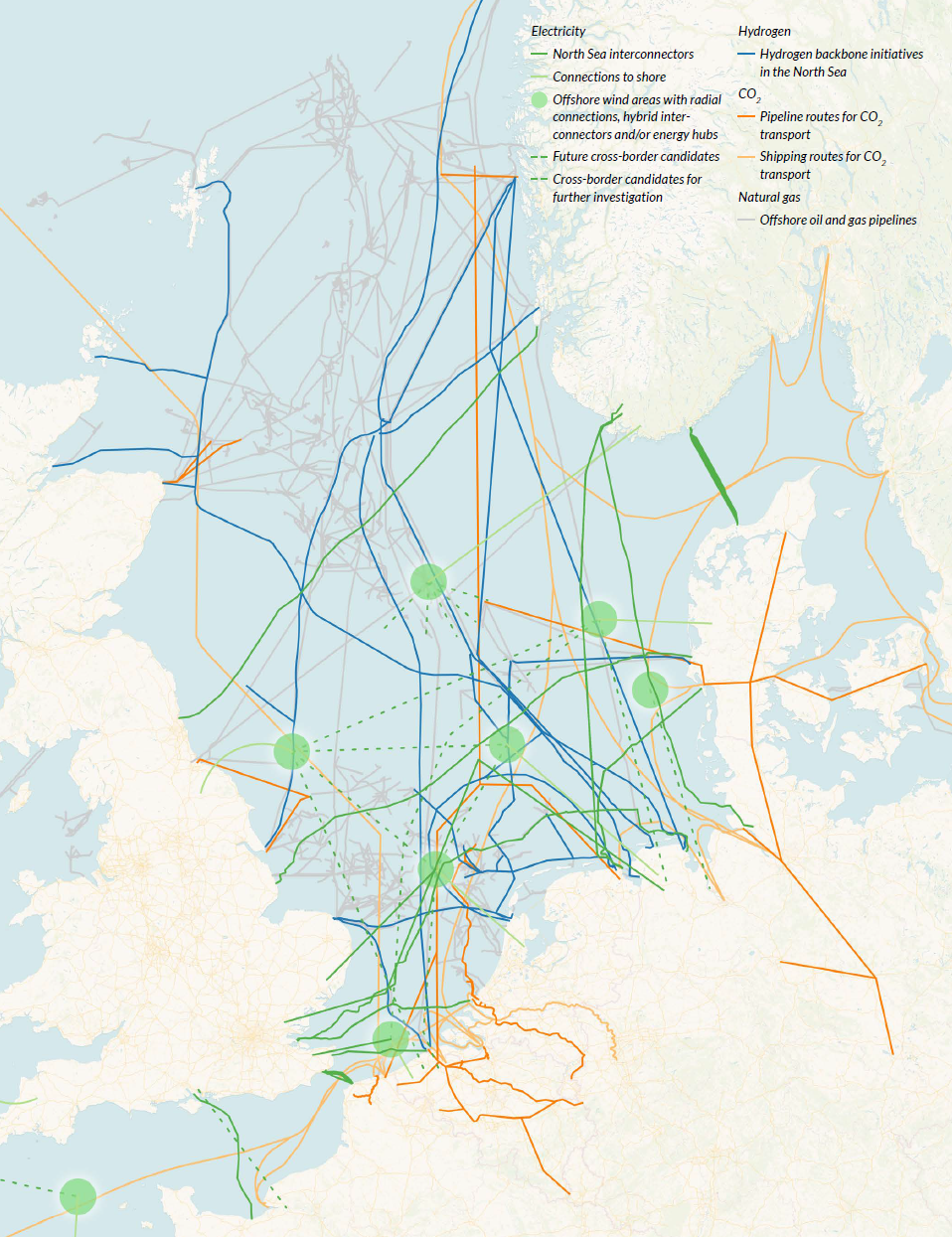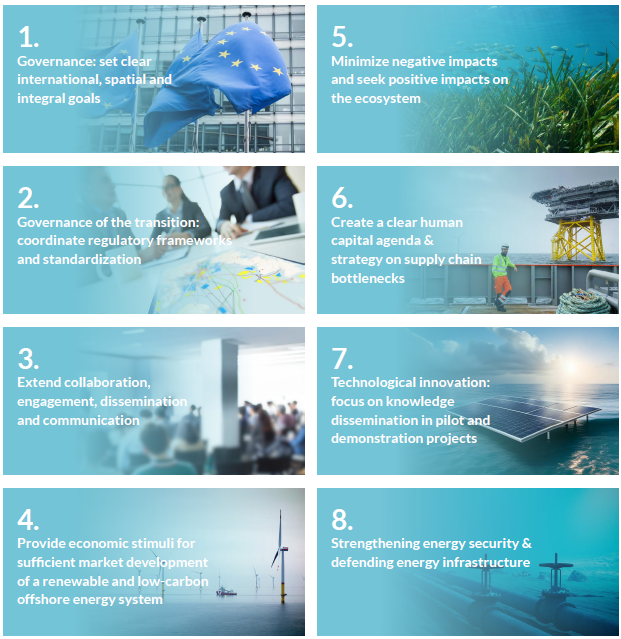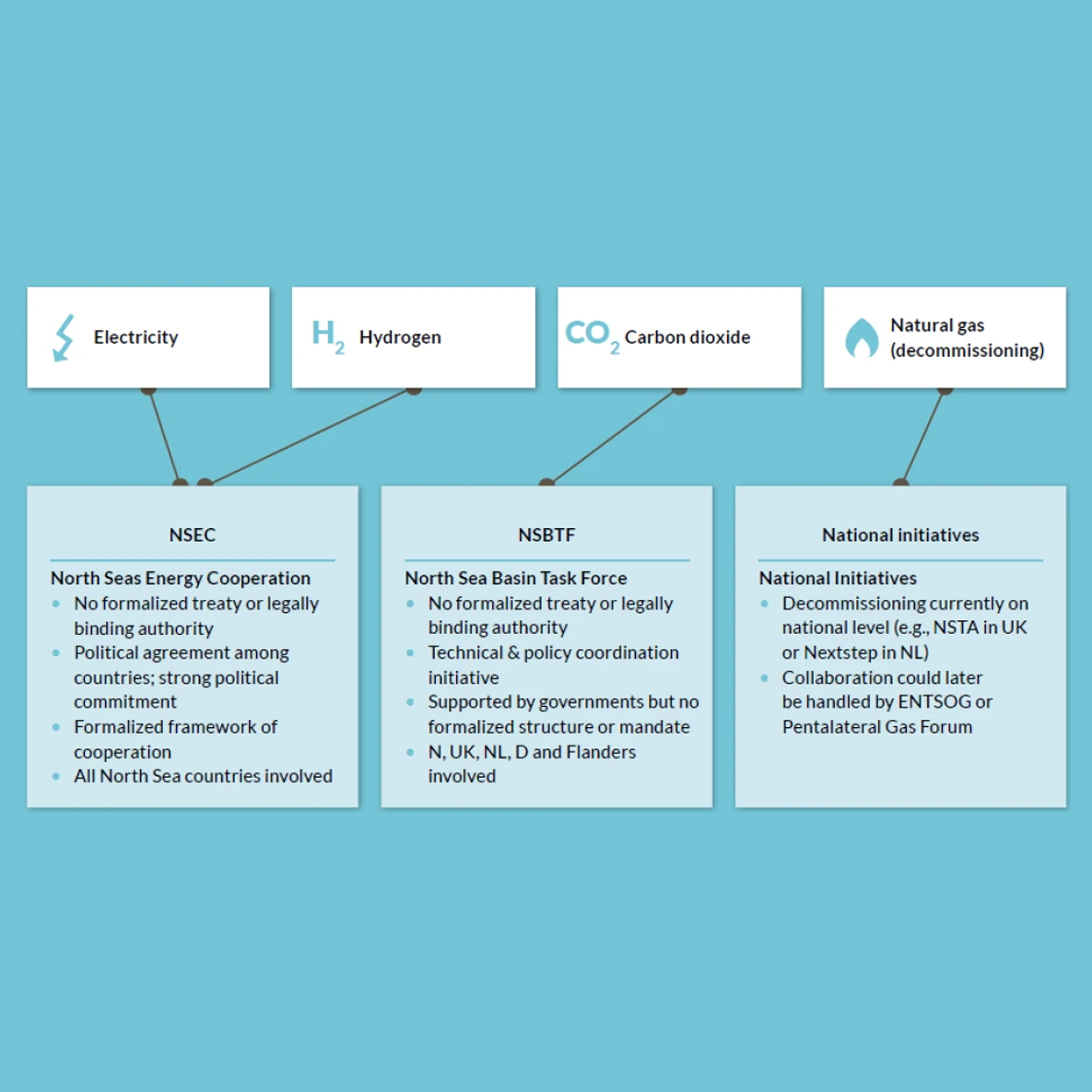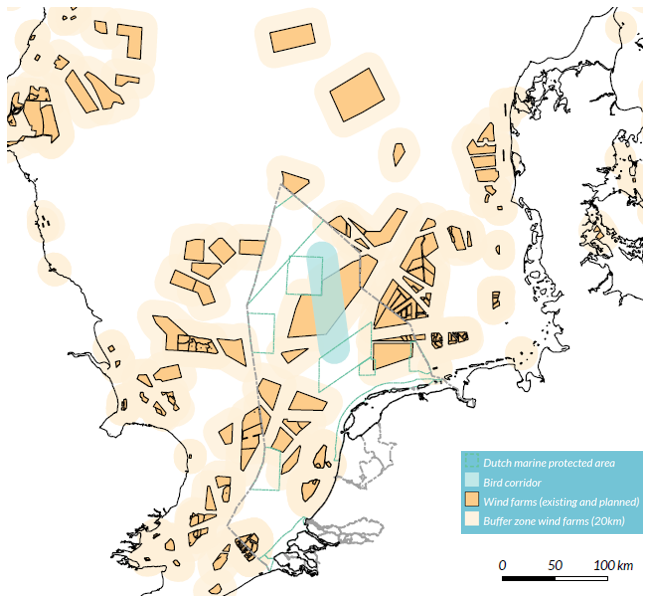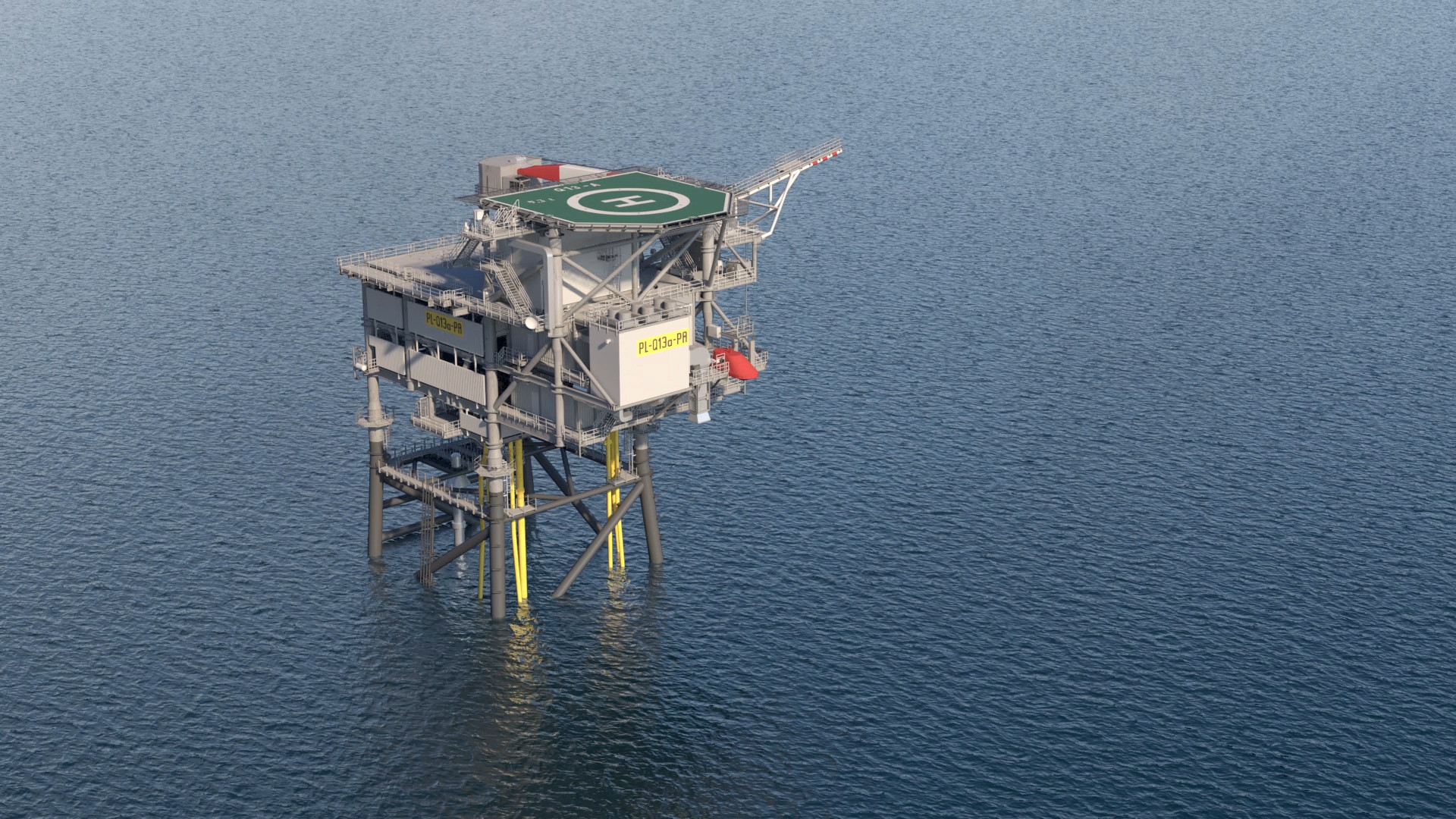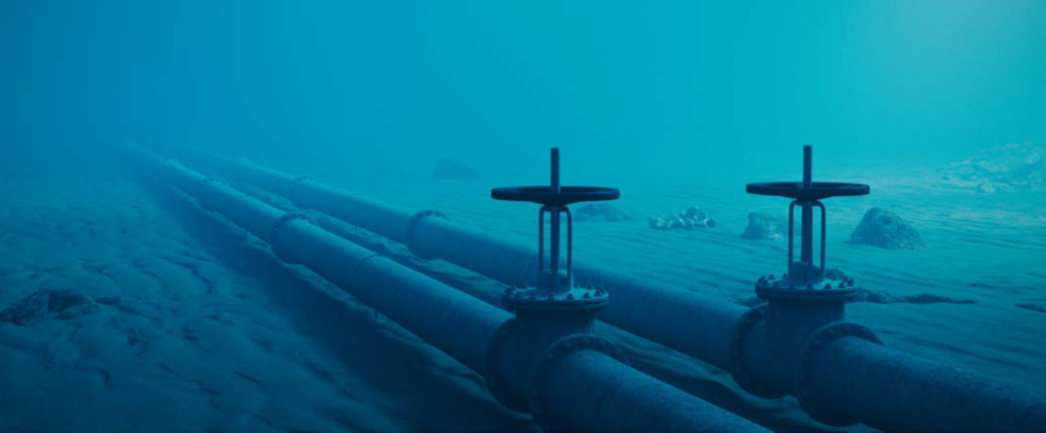Energy system integration on the North Sea
An Integrated Grid Compass for North Sea Energy System Integration
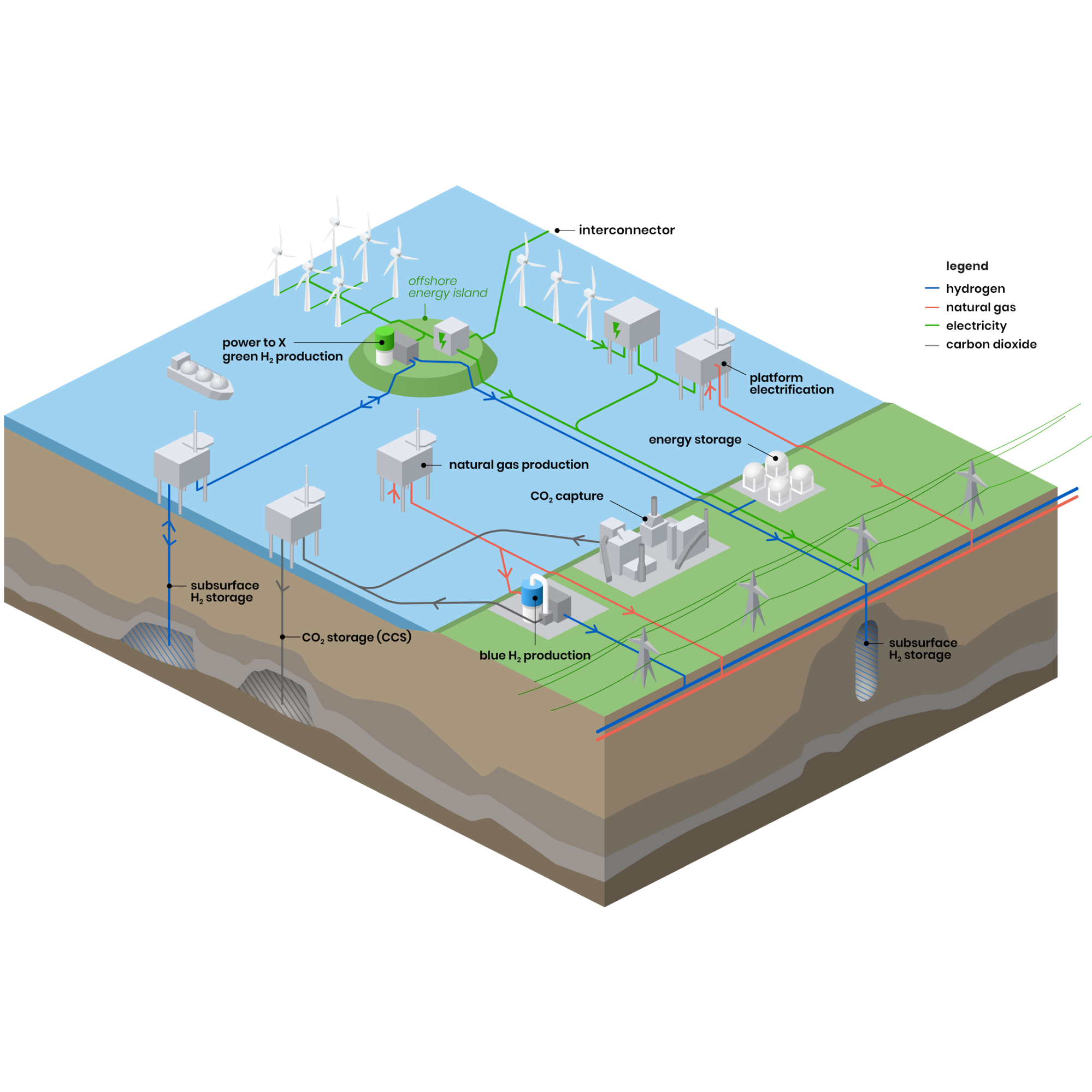
The need for an international and integral vision on the North Sea Energy transition
The North Sea region has a significant low-carbon energy potential and is poised to become ‘Europe’s green power plant’ (northseawindpowerhub.eu/knowledge/unlocking-the-north-sea-as-a-green-powerplant). Europe has committed to reduce its emissions by 55% by 2030 and achieve climate neutrality by 2050. This requires a substantial expansion of offshore wind capacity, alongside emerging technologies like floating solar, offshore hydrogen production, transport & storage and carbon capture & storage (CCS), as well as the systematic phase-out of gas exploration and production.
This expansion will be extremely challenging without an integrated and coordinated approach for the North Sea. The North Sea Energy (NSE) research program employs the concept of Offshore System Integration to identify options for reducing the costs, time, emissions, space and (human) capital required to realize the central role of the North Sea envisioned in the energy transition. Smart synergies are possible between offshore wind, marine energy, CCS, natural gas and hydrogen developments, presenting a unique opportunity for the North Sea countries to become and remain a pioneering region and innovation nucleus for global offshore energy solutions.
An integrated vision and roadmap are essential to unlock the North Sea’s climate-neutral energy potential while optimizing its value for society and nature. Information is needed on the current role and future potential of energy supply, transportation, demand, conversion, and storage in the North Sea. Subsequently, short-term actions are required to enable the integration of the energy system. Such a roadmap can provide clarity and certainty to policymakers, project developers, and society. The North Sea Energy roadmap outlines updated exploratory transition pathways for offshore wind, marine energy, hydrogen, CCS, and natural gas in an integrated assessment towards 2050. These pathways are based on insights gathered during a participatory process with stakeholders both inside and outside the consortium and are aligned with national and European strategies, ambitions and targets.
In this phase of the North Sea Energy program, additional emphasis is placed on developing energy infrastructure visions towards 2050 for the four key energy commodities in the research program: electricity, hydrogen, CO2 and natural gas. Within the consortium, we have identified possible strategies to deal with challenges for system integration and have formulated actions on several main themes for all North Sea stakeholders. Additionally, we have identified sets of key actions for six offshore energy technologies and commodities (offshore wind, marine energy, offshore green hydrogen, blue hydrogen, offshore CO2 transport and storage, and natural gas) to accelerate their development and strengthen their role in the offshore energy transition. By implementing these actions, stakeholders can take significant steps towards harnessing the energy potential of the North Sea while respecting the carrying capacity of our economy, society and nature.

The North Sea Energy vision on system integration
The North Sea Energy consortium envisions the North Sea as a thriving energy region that has achieved carbon neutrality in 2050, perhaps even becoming a net negative carbon sink for Europe. Offshore energy system integration is seen as an enabler to accelerate low carbon and renewable energy options that provide reliable, low-cost energy sources for industry and other end-users on its coastline and in the hinterland. Strategic sector coupling allows deeper and faster reduction of CO2 emissions, more efficient use of marine space and effective use of energy infrastructure for conversion, transport and storage of energy commodities. A well-integrated offshore energy system enhances energy security and resilience, reducing dependence on external energy sources and strengthening Europe’s strategic autonomy. This secures livelihoods to millions of people and creates new sustainable jobs for the future. Offshore system integration can provide synergies with non-energy stakeholders to develop solutions that have positive impacts on nature and safety as well as contribute to sustainable food production and to the circular economy.

The added value of system integration
Managing multi-use spatial challenges in the North Sea
Since the North Sea is one of the busiest seas in the world, it faces significant spatial challenges due to the multi-use of the area. Although this whitepaper focuses mainly on the ‘energy system’ of the North Sea, the ‘total system’ also includes, amongst others, fisheries, shipping routes, military activities and protected marine areas. The North Sea fulfills various functions and the ecological, societal and economic values of this area can result in conflicts among various stakeholders. Looking for synergies between the functions and adequately managing these interests, possibly prioritizing them and reaching consensus on the various functions, are crucial for smooth collaboration and alignment but can be highly complex.
Enhancing cross-border energy cooperation in the North Sea region
The North Sea is surrounded by nine countries, each with their own targets, legislation and infrastructure plans. When looking at the energy system from a cross-border perspective, various sources and demand clusters could be coupled, thereby increasing the efficiency of energy infrastructure and driving down costs. This not only applies to the infrastructure and asset deployment, but also international agreements, legislation and standardization.
The interaction between the four energy commodities
The further development of the energy commodities is largely dependent on the others. For example, in order to re-use existing oil and gas infrastructure (such as wells, pipelines, platforms or subsea structures for instalment) for transport and storage of CO2 or hydrogen, it should be clear where this is technically possible and when decommissioning is planned. Next to this, due to its intermittent behaviour the value of offshore wind will rely on energy flexibility in the system such as (offshore) hydrogen conversion and or storage solutions. This suggests that a cross-commodity view is beneficial for further development plans.
System integration as a solution
Many of the above-mentioned challenges can be tackled by taking a system perspective on the North Sea energy system. The North Sea Energy program is based on the concept of offshore system integration, involving the strategic coupling of all dominant low-carbon energy developments in the North Sea, including offshore wind deployment, CCS, energy hubs & islands and energy interconnections, hydrogen infrastructure, energy storage, and more. This system integration concept couples there sectors by integrating infrastructure, services and logistics, and making multifunctional use of space. From the energy perspective, this suggests to not individually consider the energy carriers, commodities and infrastructure assets, but regard them as part of one holistic and integrated energy system. By approaching the North Sea as an integrated system, the costs of the energy transition can be reduced, security of supply can be enhanced, the spatial claim and impact on nature can be mitigated, and energy system development times can be decreased.



